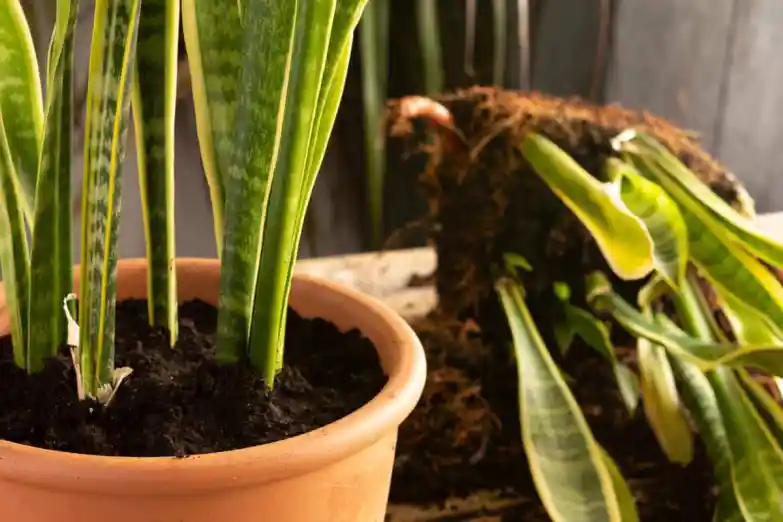
Introduction to Snake Plants
Snake Plant Flowers, scientifically known as Sansevieria, are remarkable succulent plants that have gained immense popularity as houseplants. Commonly referred to as mother-in-law’s tongue, they are characterized by their long, upright leaves that exhibit a striking green color, often adorned with varying shades of yellow or white edges. These plants are native to the arid regions of Africa, particularly West Africa, where they thrive in rocky, dry environments. Their natural resilience has contributed to their widespread distribution as ornamental plants in various parts of the world.
One of the most appealing aspects of snake plants is their ability to adapt to a range of indoor conditions, making them suitable for both novice and experienced indoor gardeners. They require minimal maintenance, thriving in low light conditions and forgiving of occasional neglect. This adaptability positions snake plants as an ideal choice for urban dwellers and people with busy lifestyles who appreciate greenery without the need for constant attention.
Beyond their aesthetic appeal, snake plants are renowned for their air-purifying abilities. Research suggests that they can filter toxins and improve indoor air quality by converting carbon dioxide into oxygen during the night, a distinctive feature among most houseplants, which predominantly release oxygen during the day. This unique capability makes snake plants not just a decorative addition but also a valuable contributor to a healthier indoor environment.
In addition to their low maintenance and air quality benefits, snake plants are also celebrated for their resilience to various environmental stresses, such as drought. This fortitude is a testament to their evolutionary history, allowing them to endure conditions that would be detrimental to many other plant species. Such qualities not only highlight the uniqueness of snake plants but also pave the way for discussions about the unusual beauty of their flowers, which emerge under specific conditions to reveal their hidden charm.
The Mystery Behind Snake Plant Flowers
Snake plants, known scientifically as Sansevieria, are popular houseplants admired for their striking foliage and air-purifying properties. However, the phenomenon of snake plant flowers is relatively obscure to many plant enthusiasts. These flowers, typically ivory or white, emerge on tall spikes that rise above the plant’s robust leaves. Understanding the conditions that facilitate this remarkable blooming process can enhance the appreciation for these unique plants.
To promote the blooming of snake plant flowers, certain environmental factors play a crucial role. Light exposure is vital; snake plants thrive in bright, indirect sunlight, although they can survive in low-light conditions. However, for flowering to occur, they generally require a moderate amount of indirect light. Temperature also significantly impacts blooming, as snake plants prefer a range between 60°F to 80°F (16°C to 27°C). Sudden temperature fluctuations can hinder the flowering process. Additionally, humidity must be monitored; snake plants are tolerant of dry air, but increased humidity can create a favorable environment for blooming.
Despite these ideal conditions, witnessing snake plant flowers is a rarity among many owners. Some experienced growers report never observing flowers, leading to speculation about their infrequency in home environments. Anecdotal evidence suggests that blooms may be more likely to appear in mature, well-established plants exposed to optimal care. For example, a knowledgeable gardener may share that after several years of dedicated attention—including proper watering, fertilization, and potting practices—his snake plant finally produced a striking display of flowers.
In conclusion, the rarity of flowering in snake plants adds an element of mystery and allure. While the conditions for blooming are relatively straightforward, the magic of witnessing these flowers remains an extraordinary experience, often reserved for the most patient and attentive plant owners.
Caring for Your Snake Plant to Encourage Flowering
To increase the chances of your snake plant producing its unique and beautiful flowers, it is essential to provide it with optimal care. These resilient plants thrive under various conditions but require some attention to detail, particularly regarding their watering, soil choice, light, and fertilization.
Watering is a critical aspect of snake plant care. These plants prefer to dry out completely between watering, which mimics their native habitat in arid environments. Overwatering can lead to root rot and, consequently, prevent the plant from blooming. It is advisable to water during the growing season, typically in spring and summer, while minimizing water during the dormant winter months. Ensuring that the pot has proper drainage can further contribute to the health of the plant.

Choosing the right soil is also significant. A well-draining potting mix enriched with organic matter is ideal for snake plants. This allows adequate airflow to the roots while retaining some moisture. A mixture composed of potting soil, cactus mix, and sand can promote a balanced environment conducive to blooming.
Light conditions play a pivotal role in encouraging the snake plant to flower. Placing the plant in bright, indirect light can enhance its growth. However, snake plants can tolerate lower light levels, which may affect their flowering potential. Additionally, mature plants are more likely to produce flowers, so nurturing your snake plant to its full size is beneficial.
Proper pot size can also impact the plant’s capacity to bloom. Snake plants prefer to be slightly root-bound, which encourages energy to be directed towards blooming rather than water and nutrient uptake. Lastly, seasonal variations in care, including fertilizing with a balanced fertilizer during the growing season, can significantly influence flowering potential. By following these guidelines, you can enhance the chances of your snake plant thriving and eventually flowering.
Cultural Significance and Uses of Snake Plant Flowers
Across various cultures, snake plant flowers hold unique positions, often embodying meanings that extend beyond their attractive appearance. In many traditional contexts, these blooms symbolize resilience and adaptability owing to the snake plant’s robust nature, thriving in diverse environments. This symbolism resonates in cultures that value endurance, making snake plant flowers a representation of strength and perseverance, often used in inspirational decor or as gifts to convey support during challenging times.
Beyond their symbolic meanings, snake plant flowers possess potential medicinal properties that have been recognized in different cultures. In herbal medicine, the leaves are sometimes employed for their purported anti-inflammatory and antibacterial effects. While the flowers themselves are not commonly utilized in traditional remedies, their presence is indicative of a healthy plant, suggesting a beneficial environment and wellness overall. The appreciation for their potential health benefits adds an intriguing layer to their cultural significance.
Moreover, the aesthetic qualities of snake plant flowers can enhance interior spaces, providing a natural elegance that aligns with contemporary decor trends. Creative ways to incorporate these flowers into home environments include using them in minimalist arrangements, where their striking forms can capture attention without overwhelming the space. In addition, placing snake plants in areas where they can bloom, such as bright windowsills, allows for their flowers to serve as focal points in a room.
Through their cultural significance, medicinal potential, and decorative uses, snake plant flowers enrich both our environments and our lives. These multifaceted qualities highlight why they are celebrated not just for their beauty, but also for the deeper narratives they carry. Understanding these aspects invites a greater appreciation and encourages the inclusion of snake plant flowers into our own spaces and traditions.







